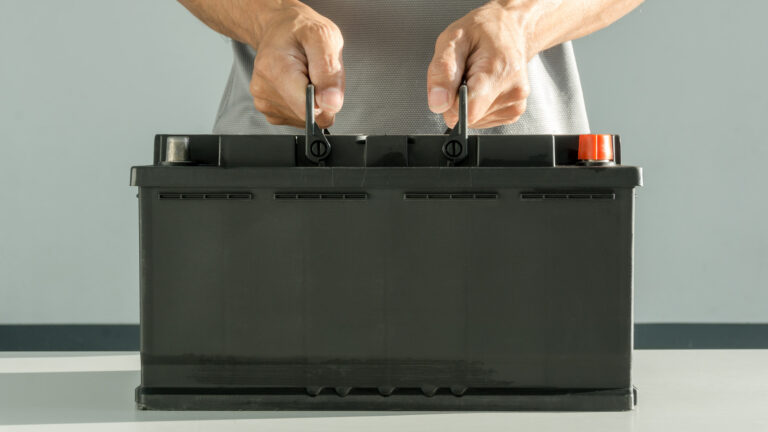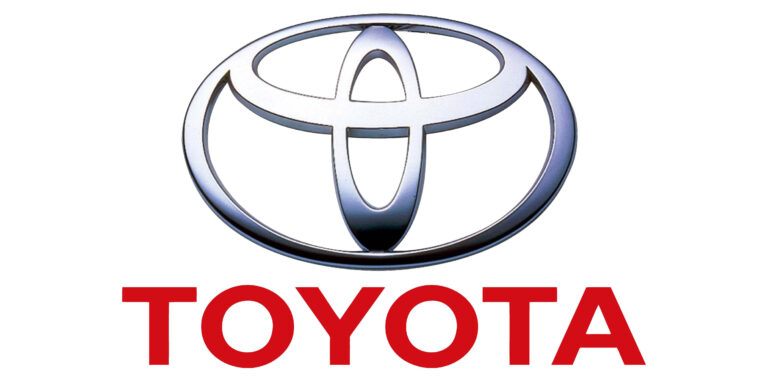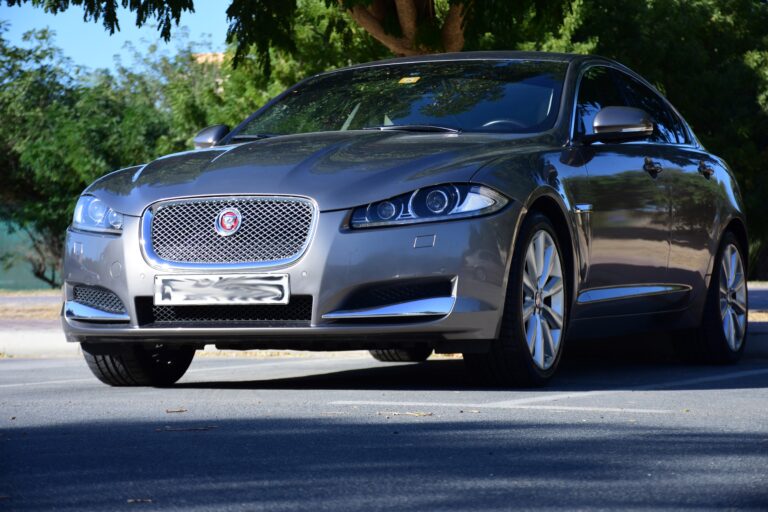Best Car Stereo Brand 2019: A Comprehensive Guide to Elevating Your In-Car Audio Experience
Best Car Stereo Brand 2019: A Comprehensive Guide to Elevating Your In-Car Audio Experience cars.truckstrend.com
The year 2019 stood as a significant benchmark in the evolution of car audio technology. It was a period where advancements in connectivity, display quality, and audio processing converged to offer consumers an unparalleled in-car entertainment experience. Defining the "Best Car Stereo Brand 2019" isn’t about pinpointing a single, undisputed champion, but rather recognizing the top-tier manufacturers who consistently delivered innovative, high-performance, and feature-rich head units that redefined what was possible on the road.
For any car enthusiast or daily commuter, a premium car stereo isn’t just about playing music; it’s the central nervous system of their vehicle’s infotainment system. It dictates sound quality, navigation capabilities, smartphone integration, and overall user interaction. The importance of selecting a superior brand in 2019 lay in securing a robust, future-proof (for its time), and enjoyable audio foundation that transformed mundane commutes into immersive journeys. This comprehensive guide will delve into the landscape of 2019’s top car stereo brands, exploring the features that set them apart, offering practical advice, and providing insights for anyone looking to understand or even replicate that year’s peak performance.
Best Car Stereo Brand 2019: A Comprehensive Guide to Elevating Your In-Car Audio Experience
Understanding the Landscape of Car Stereos in 2019
By 2019, the car stereo market had largely matured, moving beyond simple CD players to sophisticated infotainment hubs. The shift from single-DIN to double-DIN units with large, vibrant touchscreens was nearly complete for most new installations, though single-DIN options with pop-out screens or more traditional layouts still catered to older vehicles. Key trends that dominated the year included:
- Smartphone Integration: Apple CarPlay and Android Auto were no longer niche features but essential requirements for most buyers. They offered seamless access to navigation, music, messaging, and voice assistants directly from the head unit.
- Advanced Display Technology: Capacitive touchscreens, similar to those found on smartphones, offered crisp visuals and responsive touch interactions. Screen sizes grew, with 6.2-inch to 7-inch displays being common, and some pushing to 8 or even 10 inches.
- High-Resolution Audio Support: As digital music quality improved, head units began to support FLAC, WAV, and other lossless audio formats, catering to audiophiles seeking superior sound.
- Digital Signal Processing (DSP): Built-in DSP capabilities allowed for fine-tuning of sound, including time alignment, advanced equalization, and crossover adjustments, optimizing audio for the unique acoustics of a car cabin.
- Bluetooth 5.0: Enhanced reliability and improved audio streaming quality over previous Bluetooth versions.
- Expandability: Robust pre-amp outputs (RCA connections) for external amplifiers, dedicated subwoofer outputs, and multiple camera inputs (rear, front, dash cam) were standard features for premium units.

What truly made a brand "best" in this competitive environment was a combination of superior sound reproduction, intuitive user interfaces, unwavering reliability, consistent innovation, and excellent customer support.
Key Contenders for "Best Car Stereo Brand 2019"
While "best" is subjective and often depends on individual needs and budget, several brands consistently stood out in 2019 for their excellence across various categories:

- Pioneer: Often considered the industry leader, Pioneer continued its dominance in 2019 with its NEX series. They excelled in user interface design, offering highly customizable and intuitive touchscreens. Their audio processing was top-notch, and they were quick to adopt and refine features like wireless Apple CarPlay/Android Auto. Pioneer head units were known for their robust build quality and extensive feature sets.
- Kenwood: A strong contender, Kenwood’s eXcelon series was highly praised for its exceptional sound quality, often featuring advanced DSP capabilities and high-voltage pre-outs for cleaner signals to external amplifiers. Their navigation systems (often Garmin-based) were among the best, and their units generally offered comprehensive connectivity options and reliable performance.
- Alpine: Alpine maintained its premium reputation, focusing on pristine audio quality and innovative form factors. Their "Halo" series, with its floating screen design, was a significant aesthetic trendsetter. Alpine units were often chosen by audiophiles and those seeking a refined, high-end audio experience, though they sometimes came at a higher price point.
- Sony: Sony made significant strides in the car audio market in 2019, offering excellent value. Their XAV series units were known for their vibrant, responsive screens, quick boot times, and seamless smartphone integration. Sony provided a compelling balance of features, performance, and affordability, making them a popular choice for mainstream users.
- JVC: Often grouped with Kenwood (as they are part of the same parent company), JVC offered a range of solid performers that balanced features with competitive pricing. Their units shared many core technologies with Kenwood but often targeted a slightly different price segment, making advanced features more accessible.

Each of these brands carved out its niche by offering distinct advantages, whether it was Pioneer’s user-friendliness, Kenwood’s audio fidelity, Alpine’s premium sound and design, or Sony’s value proposition.
Features That Defined Excellence in 2019
For a car stereo to be considered truly excellent in 2019, it needed to go beyond basic functionality. Here are the defining features:
- Seamless Smartphone Integration (Apple CarPlay & Android Auto): This was paramount. Whether wired or, increasingly, wireless, the ability to mirror essential phone apps onto the car’s display for navigation (Google Maps, Waze), music (Spotify, Apple Music), and communication was a game-changer.
- High-Resolution Capacitive Touchscreens: Gone were the days of resistive screens. 2019’s best units featured responsive, multi-touch capacitive displays with resolutions that made maps and album art look sharp and vibrant.
- Advanced Audio Customization (DSP): Beyond simple bass and treble controls, the best units offered detailed 13-band or higher graphic equalizers, digital time alignment to synchronize sound from each speaker, and sophisticated crossover networks to properly send frequencies to specific speakers. High-voltage pre-amp outputs (4V or 5V) minimized noise and distortion when connecting external amplifiers.
- Versatile Connectivity: Multiple USB ports (for media and phone connection), Bluetooth 5.0 for reliable streaming and hands-free calling, and sometimes Wi-Fi for specific features or over-the-air updates were standard.
- Expandability for System Upgrades: Essential for enthusiasts, the best head units provided dedicated outputs for subwoofers and multiple sets of pre-amp outputs for multi-channel amplifiers. Multiple camera inputs (for reverse, front, or even blind-spot cameras) added significant safety and convenience.
- Intuitive User Interface (UI): A clean, responsive, and customizable UI was crucial. Users wanted to navigate menus effortlessly, switch between sources quickly, and personalize their display.
How to Choose the Right Car Stereo (Even in Retrospect)
Even if you’re looking back at 2019 models or considering purchasing one second-hand, the selection process remains similar:
- Determine Your Budget: Car stereos in 2019 ranged from a few hundred dollars to over a thousand for premium models. Establish what you’re willing to spend.
- Check Vehicle Compatibility:
- DIN Size: Is your car compatible with a Single DIN (standard 2" tall) or Double DIN (standard 4" tall) head unit?
- Dash Kit: You’ll likely need a vehicle-specific dash kit to ensure a seamless fit and aesthetic integration.
- Wiring Harness: A vehicle-specific wiring harness adapter simplifies installation and avoids cutting factory wires.
- Steering Wheel Control Interface: If your car has steering wheel audio controls, you’ll need an adapter (e.g., PAC, Axxess) to retain their functionality.
- Identify Your Must-Have Features: Do you absolutely need Apple CarPlay/Android Auto? Are high-resolution audio support and advanced DSP crucial for you? Do you want built-in navigation or prefer to rely on your phone?
- Consider Sound Quality: While all top brands offer good sound, some prioritize it more. If you’re an audiophile, research specific models known for their audio processing and pre-amp output quality.
- Installation Method: Are you comfortable with a DIY installation, or will you opt for professional installation? Factor this cost into your budget.
Tips for Maximizing Your Car Stereo Experience
A great head unit is just one component of a superior car audio system. To truly maximize the experience from a 2019 "best" stereo:
- Upgrade Your Speakers: Even the best head unit won’t sound great through poor quality factory speakers. Consider upgrading to aftermarket component or coaxial speakers.
- Add an Amplifier: For truly dynamic and clear sound, an external amplifier will provide more power and better signal control to your speakers than the head unit’s built-in amplifier.
- Install a Subwoofer: If you love deep, impactful bass, a dedicated subwoofer (powered or passive with an amp) is essential.
- Consider Sound Deadening: Reducing road noise and vibrations with sound deadening material in your doors and trunk can dramatically improve overall sound clarity and bass response.
- Professional Tuning: For the ultimate sound stage and balance, have your system professionally tuned by an experienced car audio installer. They can optimize time alignment, EQ, and crossovers for your specific vehicle and equipment.
- Firmware Updates: Always check for and install any available firmware updates for your head unit, as these often fix bugs, improve performance, or add new features.
Challenges and Solutions
Even with the best brands of 2019, certain challenges could arise during installation or use:
- Compatibility Issues: Not all features or interfaces are universally compatible. Solution: Thoroughly research your specific vehicle model and the stereo’s specifications. Use online fitment guides from manufacturers like Metra or Crutchfield.
- Retaining Factory Features: Some factory features (like SYNC, Uconnect, or premium sound systems) can be challenging to integrate. Solution: Specialized interface modules (e.g., iDatalink Maestro RR) are often required to retain these functionalities.
- Steering Wheel Control Retention: As mentioned, this requires an adapter. Solution: Purchase a compatible steering wheel control interface from brands like PAC or Axxess.
- Complex Sound Tuning: The advanced DSP features can be overwhelming for beginners. Solution: Utilize online tutorials, user manuals, or seek professional tuning assistance.
- Budget Constraints: Getting all desired features can be costly. Solution: Prioritize your most important features and consider upgrading components incrementally over time.
Price Table: Best Car Stereo Brands 2019 (Example Models & Estimated Prices)
Please note: Prices are estimated based on typical retail pricing in 2019 for new units and can vary based on retailer, sales, and specific model variations. These are representative models that were popular and well-regarded in that year.
| Brand | Model (Example) | Key Features (2019 Focus) | Estimated 2019 Price Range (USD) |
|---|---|---|---|
| Pioneer | AVH-W4500NEX | Wireless Apple CarPlay/Android Auto, 7" Resistive Touchscreen, Bluetooth 5.0, FLAC Playback, Dual Camera Inputs, HDMI Input | $550 – $700 |
| Kenwood | DMX906S (eXcelon) | Wired Apple CarPlay/Android Auto, Hi-Res Audio, 6.95" Capacitive Touchscreen, Dual USB, 13-Band EQ, 5V Pre-outs | $500 – $650 |
| Alpine | ILX-F309 (Halo9) | 9" Floating Display, Wired Apple CarPlay/Android Auto, Hi-Res Audio Support, Bluetooth, Sound Tuning Features | $800 – $1000 |
| Sony | XAV-AX5000 | Wired Apple CarPlay/Android Auto, 7" Capacitive Touchscreen, Quick Wake-up, Dual USB, Clean UI, 3x 2V Pre-outs | $350 – $450 |
| JVC | KW-M740BT | Wired Apple CarPlay/Android Auto, 6.8" Capacitive Touchscreen, Bluetooth, Rear View Camera Input, 13-Band EQ | $300 – $400 |
Frequently Asked Questions (FAQ)
Q: Is a 2019 car stereo still good in 2024?
A: Absolutely! Many 2019 premium models still offer excellent features like Apple CarPlay/Android Auto, high-resolution audio support, and advanced DSP that are relevant today. While newer models might have minor improvements (e.g., faster processors, slightly better screens, wireless versions of CarPlay/Android Auto on more models), a top-tier 2019 unit remains a significant upgrade over most factory systems.
Q: What’s the difference between Single DIN and Double DIN?
A: "DIN" refers to the size standard. A Single DIN unit is 2 inches tall and 7 inches wide. A Double DIN unit is 4 inches tall and 7 inches wide, allowing for larger screens (typically 6.2 inches and up) and more complex interfaces. Most modern vehicles accommodate Double DIN units.
Q: Do I need Apple CarPlay/Android Auto?
A: While not strictly "needed," these features vastly improve the in-car experience. They allow you to safely use your smartphone’s navigation, music apps, and communication tools directly on the stereo’s screen, minimizing distractions and enhancing convenience.
Q: How much should I spend on a car stereo?
A: In 2019, prices ranged from $200-$300 for basic aftermarket units to over $1000 for high-end, feature-rich models. A good mid-range unit (around $400-$600) typically offered a strong balance of features, sound quality, and reliability from top brands.
Q: Can I install a car stereo myself?
A: If you have basic mechanical skills, understand wiring diagrams, and are comfortable with tools, a DIY installation is possible with the right dash kit, wiring harness, and adapters. However, for complex systems, integrating factory features, or if you’re unsure, professional installation is highly recommended to avoid damaging your vehicle or the stereo.
Q: What about sound quality? Does the brand truly make a difference?
A: Yes, the brand and specific model significantly impact sound quality. Premium brands like Kenwood (eXcelon) and Alpine often prioritize high-quality internal components, advanced digital signal processing (DSP), and higher voltage pre-amp outputs, which lead to cleaner, more detailed, and more customizable audio. While all top brands offer good sound, the nuances are noticeable to discerning listeners.
Concluding Summary
The quest for the "Best Car Stereo Brand 2019" ultimately leads to a select group of manufacturers – Pioneer, Kenwood, Alpine, Sony, and JVC – who, through their relentless innovation and commitment to quality, defined the pinnacle of in-car audio technology for that year. These brands not only offered superior sound reproduction but also integrated cutting-edge features like seamless smartphone connectivity, advanced touchscreens, and sophisticated audio processing that transformed the driving experience.
While technology continually evolves, the standards set by these brands in 2019 remain a testament to their engineering prowess. For anyone seeking to understand the landscape of car audio at that time, or even to equip their vehicle with a robust and feature-rich system from that era, focusing on these industry leaders and their flagship models from 2019 is a highly recommended approach. A well-chosen car stereo from these top brands is not just an electronic device; it’s an investment in countless hours of enhanced driving pleasure and auditory immersion.





